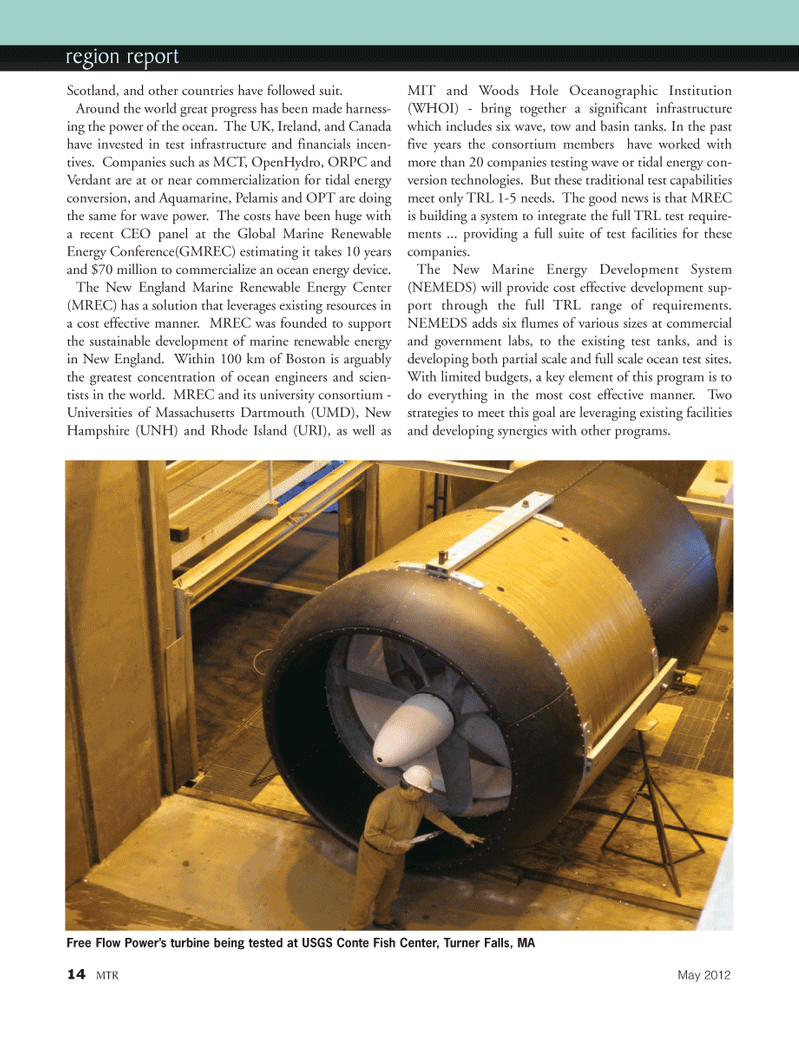
Page 14: of Marine Technology Magazine (May 2012)
Hydrographic Survey
Read this page in Pdf, Flash or Html5 edition of May 2012 Marine Technology Magazine
14MTRMay 2012Scotland, and other countries have followed suit. Around the world great progress has been made harness- ing the power of the ocean. The UK, Ireland, and Canada have invested in test infrastructure and financials incen- tives. Companies such as MCT, OpenHydro, ORPC and Verdant are at or near commercialization for tidal energy conversion, and Aquamarine, Pelamis and OPT are doing the same for wave power. The costs have been huge with a recent CEO panel at the Global Marine Renewable Energy Conference(GMREC) estimating it takes 10 years and $70 million to commercialize an ocean energy device. The New England Marine Renewable Energy Center (MREC) has a solution that leverages existing resources in a cost effective manner. MREC was founded to support the sustainable development of marine renewable energy in New England. Within 100 km of Boston is arguably the greatest concentration of ocean engineers and scien- tists in the world. MREC and its university consortium - Universities of Massachusetts Dartmouth (UMD), New Hampshire (UNH) and Rhode Island (URI), as well as MIT and Woods Hole Oceanographic Institution (WHOI) - bring together a significant infrastructure which includes six wave, tow and basin tanks. In the past five years the consortium members have worked with more than 20 companies testing wave or tidal energy con- version technologies. But these traditional test capabilities meet only TRL 1-5 needs. The good news is that MREC is building a system to integrate the full TRL test require- ments ... providing a full suite of test facilities for these companies.The New Marine Energy Development System (NEMEDS) will provide cost effective development sup- port through the full TRL range of requirements. NEMEDS adds six flumes of various sizes at commercial and government labs, to the existing test tanks, and is developing both partial scale and full scale ocean test sites. With limited budgets, a key element of this program is to do everything in the most cost effective manner. Two strategies to meet this goal are leveraging existing facilities and developing synergies with other programs. Free Flow Power?s turbine being tested at USGS Conte Fish Center, Turner Falls, MA region reportMTR#4 (1-17):MTR Layouts 5/4/2012 3:24 PM Page 14

 13
13

 15
15
